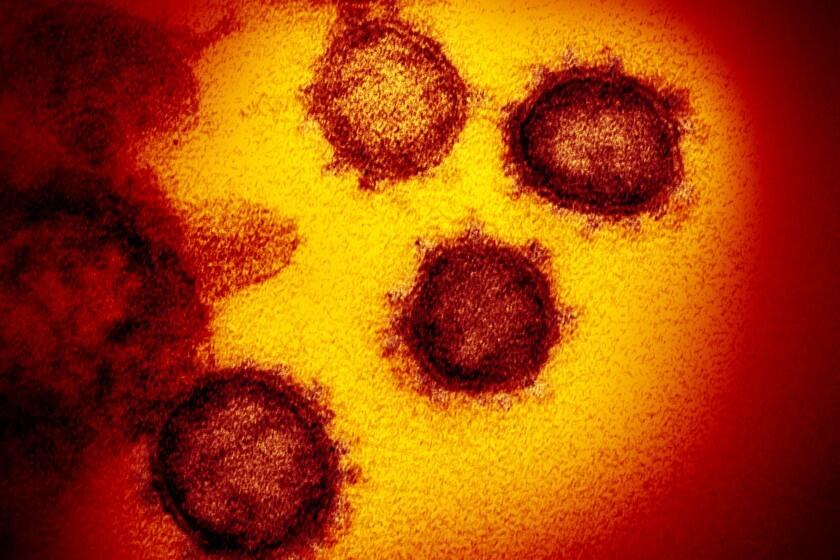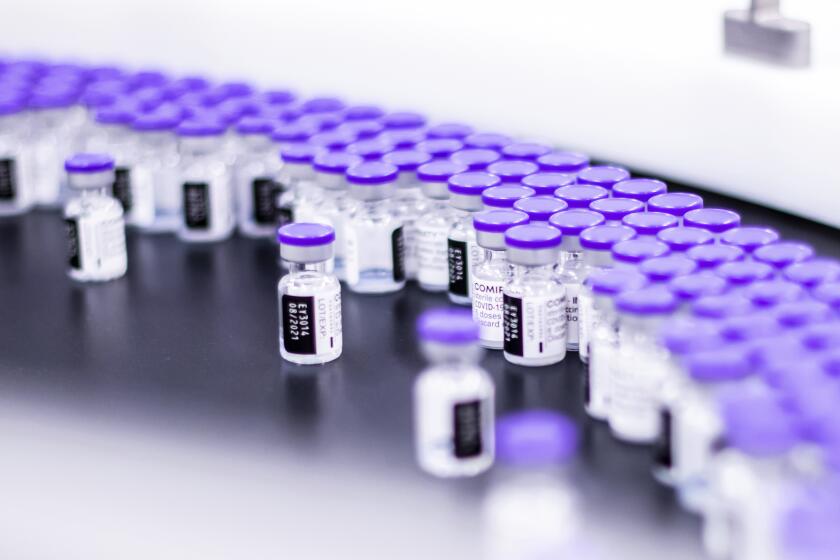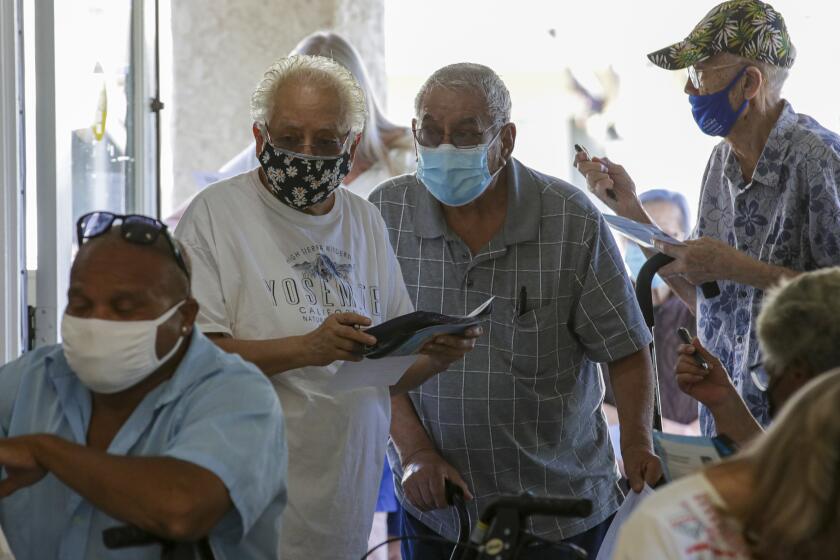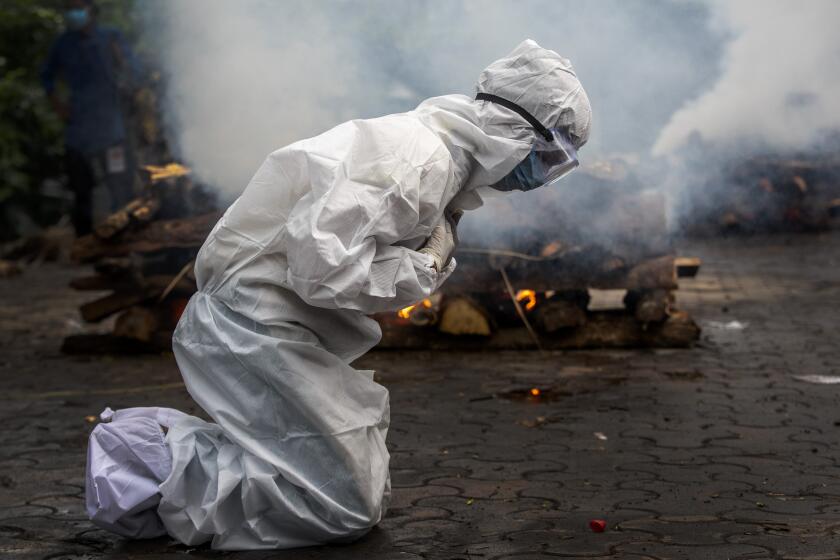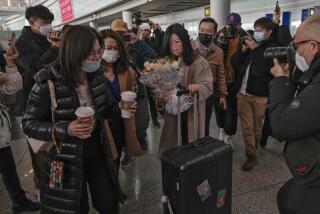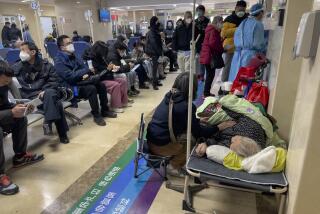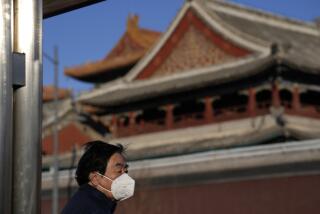Early success gives way to coronavirus surges and lockdowns in parts of Asia
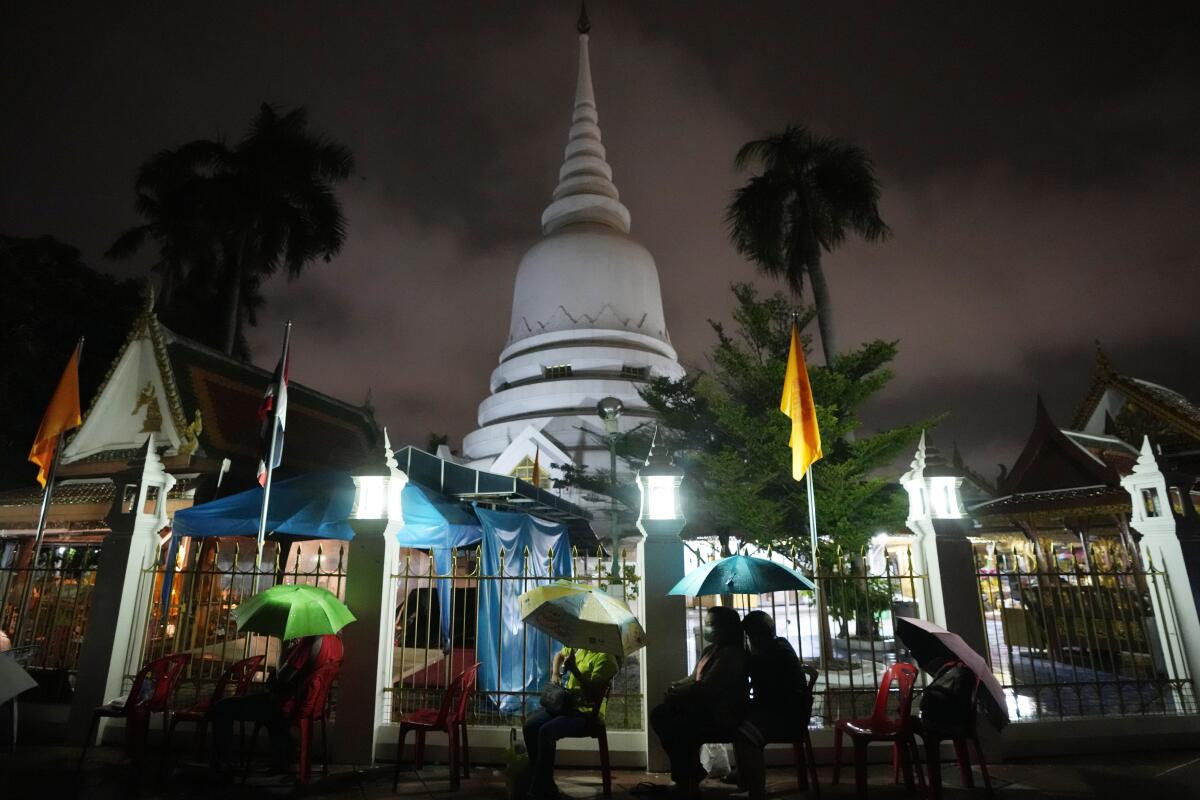
BANGKOK, Thailand — Several countries in the Asia-Pacific region that are experiencing their first major surges of the coronavirus rushed to implement tough restrictions Friday, a year and a half into a pandemic that many initially weathered well.
Faced with rapidly rising numbers of infections in recent months, authorities hope the measures can slow the spread before healthcare systems are overwhelmed.
It’s a rhythm familiar in much of the world, where repeated surges deluged hospitals and led to high numbers of deaths. But many Asian countries avoided that cycle by imposing stiff travel restrictions combined with tough measures at home.
Now some are seeing record numbers of new cases and even deaths, blamed in part on the highly contagious Delta variant first detected in India, combined with low rates of vaccination and decisions to ease restrictions that have hit economies hard. Though overall numbers are nowhere yet near those seen during outbreaks in hot spots in Europe and the United States, the rapid rise set off alarm bells just as many Western countries with high vaccination rates began to breathe a sigh of relief.
Thailand reported a record number of new deaths Thursday, with 75 — and 72 more on Friday. South Korea set a record for number of new cases Thursday, only to break it Friday with 1,316 infections, according to the Korea Disease Control and Prevention Agency. For the first time, Indonesia is seeing a surge that has hospitals turning patients away and oxygen supplies running out.
Of Thailand’s 317,506 confirmed cases and 2,534 deaths since the pandemic started, more than 90% have come since the start of April.
The highly infectious Delta variant has become California’s most identified strain of the coronavirus, a troubling development.
Prime Minister Prayuth Chan-ocha’s handling of the surge has been widely criticized, including the decision to allow people to travel for April’s Songkran festival celebrating Thailand’s New Year.
Thailand already has strict regulations on wearing masks and other rules to prevent the spread of the coronavirus, but the government announced even more stringent measures Friday for Bangkok and the surrounding area, including closing spas, limiting the hours of public transit and restricting the opening times of markets and convenience stores.
“There is something wrong with the government policies; our vaccinations are too slow and we should get better vaccines,” said Cherkarn Rachasevet, a 60-year-old IT analyst, who hustled to the grocery store to stock up on supplies after hearing new restrictions were coming. She wore four masks and a face shield.
She lamented that she isn’t due for her first shot until the end of the month.
Pfizer says it is planning to seek authorization from the Food and Drug Administration for a third dose of its COVID-19 vaccine as a booster shot.
Across the Asia-Pacific region, immunization rates have lagged for a variety of reasons, including production and distribution issues as well as an initial wait-and-see attitude from many early on when infection numbers were low and there was less of a sense of urgency.
In South Korea — widely praised for its initial response to the pandemic, which included extensive testing and contact-tracing — critics are now blaming a current surge in cases on the government’s push to ease social distancing because of economic concerns. Meanwhile, a shortage in vaccine supplies has left 70% of the population still waiting for their first shot.
The recent death toll has been low, however, and authorities attribute that to the fact that many who have been vaccinated were at-risk older Koreans.
Amid a spike in infections in the Seoul area, authorities announced that, starting Monday, they would impose the strongest restrictions yet. Those include prohibiting private social gatherings of three or more people after 6 p.m., shutting down nightclubs and churches, banning visitors at hospitals and nursing homes, and limiting weddings and funerals to family-only gatherings.
Older workers offset a labor shortage of younger workers. Their exit threatens economic growth, productivity and public finances.
No country has been worse hit in the region recently than Indonesia. The seven-day rolling averages of daily cases and deaths both more than doubled over the past two weeks.
Health experts say a partial lockdown imposed Saturday was too little, too late, and they warned that the current wave, which is mostly on the islands of Java, Bali and Sumatra, will soon start to spread across the vast archipelago — and the health system is already buckling under the pressure.
Despite a strict national lockdown in nearby Malaysia under which residents are confined to their homes, with only one person per household allowed out to purchase groceries, new cases since the lockdown began June 1 continued to shoot up, and a record 9,180 daily cases were reported Friday. The total death toll more than doubled to 5,903 since June 1.
It’s the second national lockdown in the last year in Malaysia ,and the government said it would stay in place until daily infections fell below 4,000 and at least 10% of the population was vaccinated — but it comes at a tremendous cost, deepening economic hardships, with scores of businesses forced to close and thousands losing their jobs.
Vietnam also imposed tighter restrictions Friday, locking down Ho Chi Minh City, the country’s largest metropolis and its economic and financial hub, for two weeks. The southern city’s 9 million residents are permitted to leave home only to buy food and medicine and for other urgent matters.
Vietnam was able to limit its total coronavirus caseload to 2,800 during the first year of the pandemic, and it reported almost no new cases in the three months up to the end of April, when they began to climb rapidly. In the last two months, the country has recorded some 22,000 new cases, and the less stringent restrictions imposed so far have been unable to stem the rise.
“It is a difficult decision to lock down the city, but it is necessary to curb the pandemic and get back to normalcy,” Prime Minister Pham Minh Chinh said during a government meeting Thursday evening.
Currently, about 4% of the population has received at least one dose of a COVID-19 vaccine, though the Health Ministry said it hopes to inoculate 70% of the country’s 96 million people by the end of the year.
The COVID-19 death toll has eclipsed 4 million as the crisis increasingly becomes a race between the vaccine and the highly contagious Delta variant.
One exception to the regional rule appears to be India, perhaps because its surge came first. The country has slowly emerged from a traumatic April and May, when a devastating spike in infections tore through the nation, hospitals ran out of beds and oxygen supplies, and overwhelmed crematoriums were forced to burn bodies on pyres outdoors.
New cases and deaths are now decreasing, but with less than 5% of the country’s eligible population fully vaccinated, authorities are scrambling to distribute more shots and are investing heavily in field hospitals and ICU beds, and stockpiling oxygen supplies.
Japan and Australia also announced new restrictions this week. Tokyo is particularly being watched since its state of emergency means spectators will be banned at most venues at the upcoming Olympics.
With the detection of the Delta variant last month in the Australian state of New South Wales, state Premier Gladys Berejiklian said Friday that this was the “scariest period” of the pandemic yet as she announced new restrictions in Sydney after the city reported 44 new cases, in line with the country’s approach to move quickly with targeted measures to stamp out new outbreaks.
“New South Wales is facing the biggest challenge we have faced since the pandemic started,” she said. “And I don’t say that lightly.”
More to Read
Sign up for Essential California
The most important California stories and recommendations in your inbox every morning.
You may occasionally receive promotional content from the Los Angeles Times.
